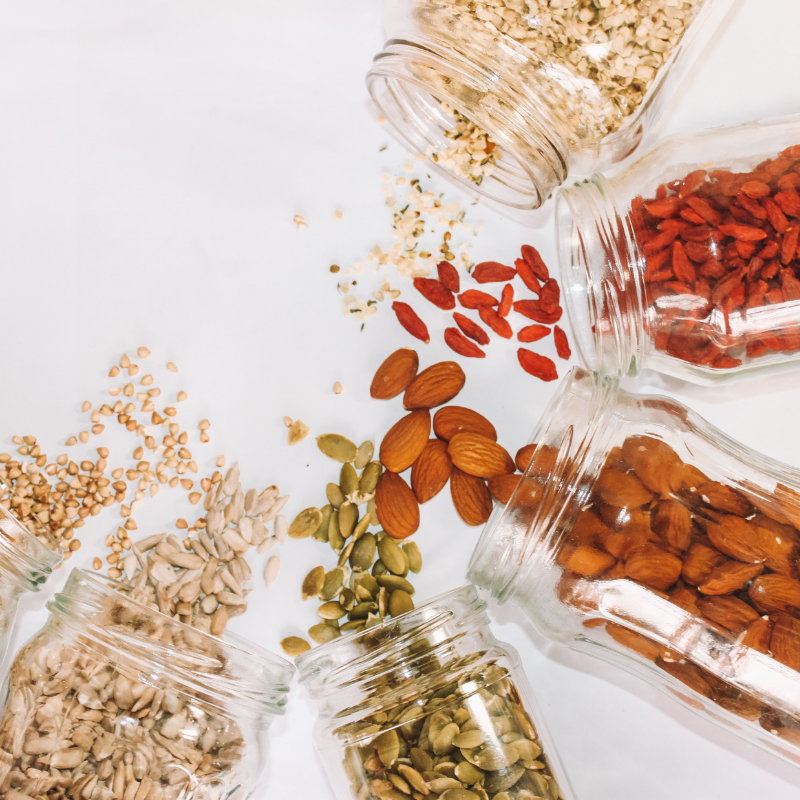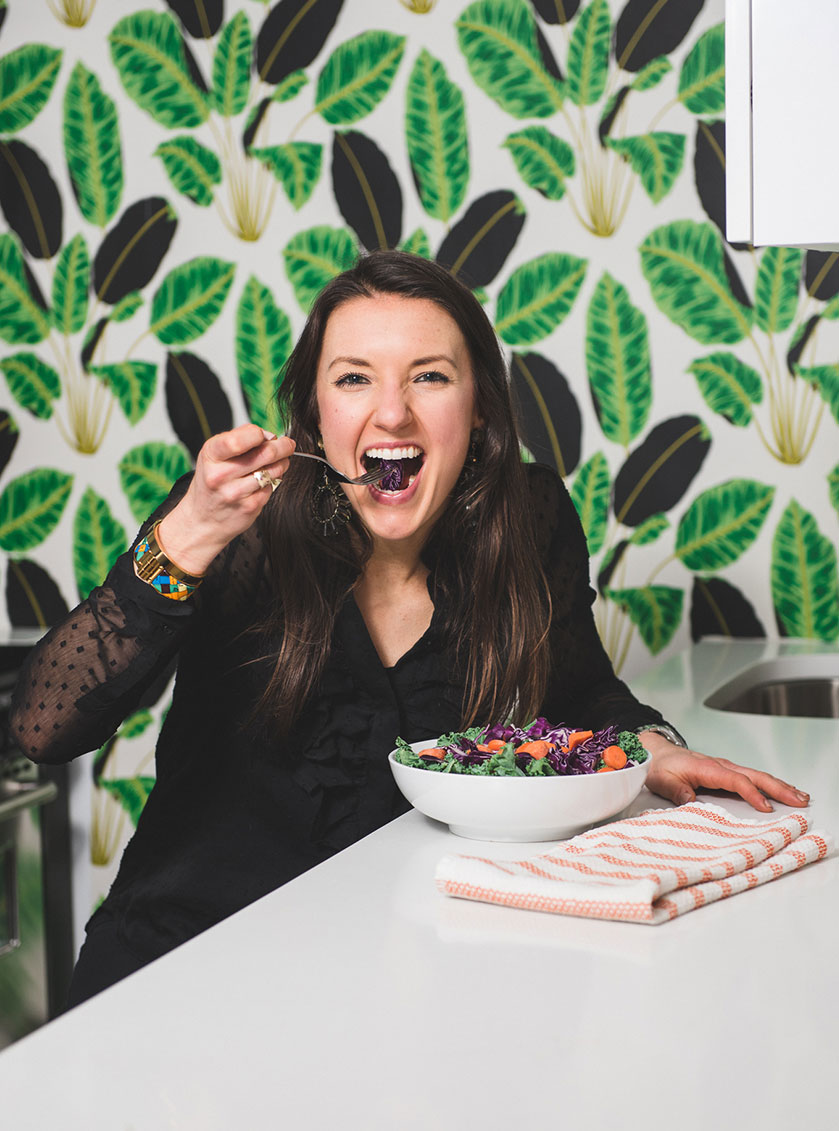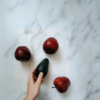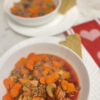
All about the women’s cycle
Women’s health, balanced hormones, healthy menstrual cycle – let’s talk about it! While many of us are familiar with the ovulatory and menstrual cycle, our bodies actually go through four distinct phases every month. In this post, we will be talking about hormones, the menstrual cycle’s phases, and what to eat during each phase.
Cycle Overview
A normal menstrual cycle differs from person to person, but the average is around 28 days. There are five significant hormones at play in a woman’s body during the menstrual cycle: Estrogen, Progesterone, Follicle-stimulating hormone (FSH), Luteinizing stimulating hormone (LH), and Testosterone. Each of these hormones plays critical roles and vary in their levels throughout the month. Within the menstrual cycle, there are four distinct phases based on hormone levels: Menstrual, Follicular, Ovulatory, and Luteal. These hormone shifts can contribute to ups and downs in mood, energy levels, food cravings, irritability, and the overall influx of emotions. The foods and nutrients you consume can be a great tool as they help regulate and relieve some of your signs and symptoms so that you can feel your best!
Phase 1: Menstrual
The first phase is the beloved Menstrual phase (totally kidding here) when we get our period. This phase varies from person to person but lasts anywhere from two to seven days, where the first day of bleeding is day one of the cycle. Hormone levels are kind of all over the place here; Progesterone drops off while Estrogen peaks and then falls. This phase takes a toll on your body as it is in the process of shedding the lining of your uterus.
To support your body during this rather unpleasant time, we turn to water-rich fruits and veggies to stay hydrated and also incorporate comfort foods. Comfort foods we love are warm soups and stews and roasted root veggies which can easily be turned into delicious fries. Smoothies are also great here and a way to sneak in extra greens, but can also totally be a comfort food if you get creative (think: banana and peanut butter smoothies or creamy chocolate smoothies made from cacao and avocado). Saving the best for last, we can’t forget quality dark chocolate (look for >70% dark and natural sugar) to soothe those cravings and also help our symptoms.
Foods for the Menstrual phase:
- Zucchini
- Tomato
- Celery
- Cucumber
- Spinach, Sweet Potato & Avocado (packed with magnesium to ease cramping)
- Cabbage
- Cauliflower
- Carrots & Parsnips
- Boy Choy
- Mushrooms
- Quality sources of protein (Grass-fed meats, wild-caught fish, pasture-raised eggs)
- Bone Broth
- Dark Chocolate
On a plate (or should I say bowl), this looks like a broth-based soup with zucchini, kale, carrots, gluten-free noodles or rice, and chicken or beef!
Phase 2: Follicular
The second phase of the menstrual cycle is the Follicular phase. This phase occurs around day six through day fourteen and is when the body is preparing for ovulation. During the follicular phase, hormones are at their lowest point. This is why many women have low energy and feel wiped leading up to their period.
Because of this overall lack of energy, we want to supply our body with tons of energy-boosting foods focusing on Iron and Vitamin B12.
These nutrients are plentiful in high-quality animal products like grass-fed meats, wild-caught fish, and pasture-raised eggs. Plant-based sources include dark leafy greens, legumes, beans, nuts, and seeds. Additionally, Iron is best absorbed when eaten with Vitamin C, which is often found in colorful fruits and veggies.
Foods for the Follicular Phase:
- Grass-fed meats
- Wild-caught fish
- Pasture-raised eggs
- Dark leafy greens (spinach, kale, bok choy)
- Legumes (chickpeas, lentils, peas, etc.)
- Beans (kidney, lima, pinto, black, etc.)
- Seeds (pumpkin & flax)
- Vitamin C (citrus fruits, peppers, strawberries, brussels, broccoli)
On your plate, this looks like a salad bowl filled with bright veggies like carrots, broccoli, beets, and pumpkin seeds, topped with pasture-raised eggs, and dressed in olive oil with lemon.
Phase 3: Ovulatory
The Ovulatory phase is the shortest phase lasting between one and two days, generally around days 13-15. During this time, Estrogen levels reach their peak, and Testosterone levels surge. This typically results in higher energy levels, a positive mood, and an increase in libido.
While you likely are feeling pretty good, you can further support your body by focusing on quality proteins and fats while cutting back on the carbohydrates a bit. Specifically, we suggest having lighter carbohydrate sources. We also love incorporating fiber-rich veggies, antioxidant-rich fruits, and a variety of seeds.
Foods for the Follicular phase:
- Grass-fed meats
- Wild-caught fish
- Pasture-raised eggs
- Legumes (chickpeas, lentils, peas, etc.)
- Quinoa
- Asparagus
- Brussel Sprouts
- Broccoli
- Leafy Greens
- Berries
- Seeds (pumpkin & flax)
On your plate, this looks like roasted chicken, broccoli, and brussels with a side of quinoa all drizzled with tahini.
Phase 4: Luteal
Lastly, is the Luteal phase can last anywhere from 11 to 17 days! During this phase, our Progesterone rises, which is the culprit for our PMS symptoms. Yup, this is where we feel bloated, irritable, moody, have brain fog…you get the point. Additionally, these feelings are usually accompanied by increased hunger and cravings for comfort foods that are higher in fat and carbohydrates. Unfortunately, the rise in Progesterone can make the body more sensitive to changes in blood sugar which means we need to be more attentive to when and what we eat.
We suggest eating light but OFTEN (every three to four hours) during the Luteal phase to help balance blood sugar. We believe it’s important to honor your body and its cravings. In this case, since you’re likely craving more carbohydrates, we suggest incorporating starchy veggies. Then, pair these carbs with a quality protein source and some healthy fats, and you are good to go!
Foods to eat for the Luteal Phase:
- Grass-fed meats
- Wild-caught fish
- Pasture-raised eggs
- Sweet potatoes
- Butternut squash
- Pumpkin
- Parsnip
- Carrots
- Avocado
- Olive Oil
- Sunflower & Sesame Seeds
On your plate, this looks like roasted sweet potato fries with salmon, avocado, and some sauteed spinach.
Note that common PMS symptoms include bloating and other uncomfortable digestive symptoms. To help mitigate these feelings, look to add in some spirulina into smoothies, and digestive teas throughout the day (peppermint, ginger, turmeric, and mint). You also may find relief in avoiding raw fruits and veggies and cooking them instead.
The Bottom Line
The women’s body is so complex and amazing, with a lot going on all the time! Eating different foods depending on where you are in your body’s cycles is a great tool to help support and nourish your body through all of its hormonal related changes.
Need help balancing your hormones or want to learn more? Click here to work with us!







